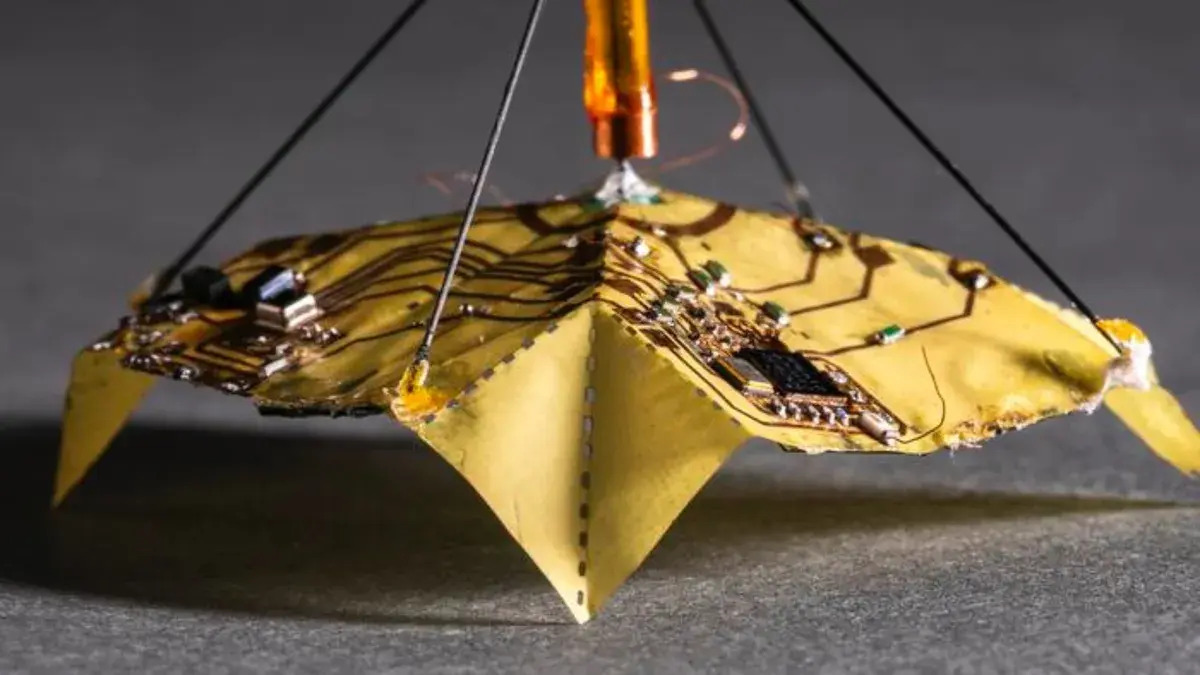
A unique drone that looks like a maple leaf, weighing only 40 grams – scientists have shown a new development (photo)
A group of scientists at the University of Washington has successfully created a miniature robot that resembles an origami figure. The robot is powered by solar energy and is able to change its shape during flight; it transmits the collected information via Bluetooth.
Such robots, called microflyers, can climb to a height of up to 40 meters while weighing only 40 grams – less than the weight of an average nail. The key elements of this particular robot include a battery-free drive, a solar energy collection system, and a controller responsible for initiating these shape changes during flight.

The electromagnetic drives built into these robotic devices allow them to fold their individual parts and transform on the fly into an origami figure. The scientists say they were inspired by geometric patterns from nature, and this allows the flyers to imitate the flight of different leaves.
When unfolded flat, such an origami structure randomly flips in the wind, like an elm leaf. But the transition to the folded state changes the airflow around it and ensures a steady descent, just like a maple leaf falling. This highly energy-efficient method allows researchers to control the decline of a microfluidic device without using batteries, which was previously impossible.
The ability to change its shape enhances the ability of these devices to collect important data during flight. They are also equipped with advanced Bluetooth features that enable them to quickly transmit atmospheric information such as temperature and air pressure.

During outdoor tests, the micro-flyer demonstrated the ability to travel up to 98 meters after dynamic shape changes. Subsequently, the robot successfully transmitted data to Bluetooth receivers at a distance of up to 60 meters.
According to scientists, such miniature drones equipped with various sensors and devices for collecting data about the Earth’s atmosphere will be useful to environmentalists. In recent years, significant advances in sensor technology and autonomous navigation have made these robots valuable tools for studying and understanding our atmosphere.
“Such microfluidic devices could automate the deployment of large-scale wireless sensor networks for environmental monitoring,” the authors write in the published paper.

